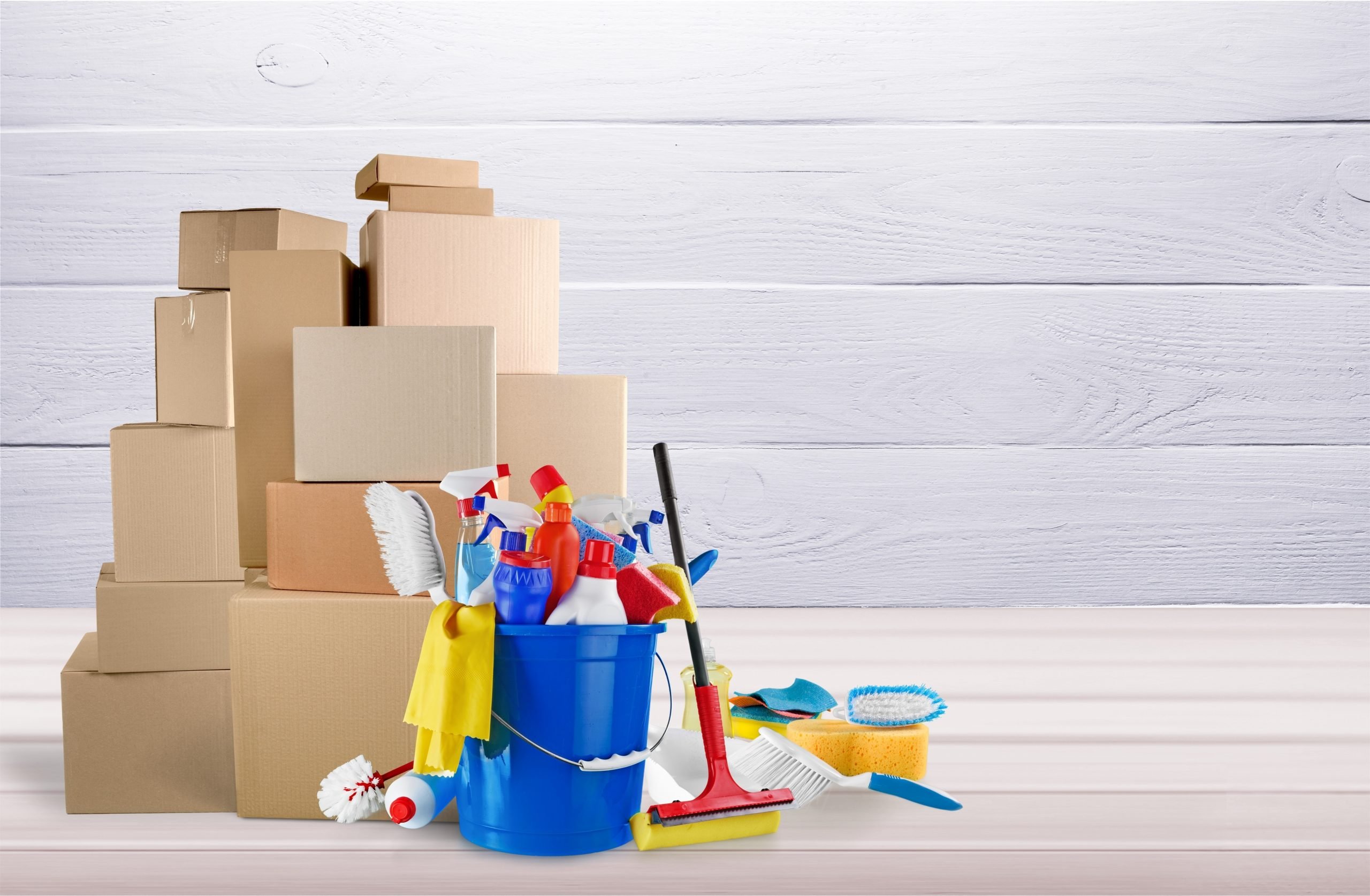The Moving Supplies List
You’ll Ever Need
Let’s Get Organized With Moving Supplies List

How important is it to have a moving supplies list for your upcoming move?
Unfortunately, the ongoing coronavirus pandemic makes it challenging to find many of the supplies you need for packing and cleaning. However, if you do some online research and give yourself plenty of time to order the proper supplies, you’ll be just fine.
Critical Planning
Planning is key when it comes to moving, especially during these uncertain times. Don’t make the mistake of becoming overwhelmed by simply guessing at what supplies you will need for your upcoming move. Packing with durable moving boxes, padding, wrap and tape helps you to secure your treasured belongings during a move.
Packing & more
From packing up all your belongings to coordinating the transport of your household items, moving is a huge undertaking. It’s a lot to think about, but you don’t have to go it alone! Below is a comprehensive list of the items we recommend if you are self-packing; however, always remember that if you don’t have the time or energy to pack, United offers both full and partial packing services for your move.
Moving safely
We understand that even during these unprecedented times, many people still need to move and need help to do it. That’s why United is open for business and working closely with our crews and van operators to continue to conduct business as usual while adhering to new safety protocols and guidelines as directed by our governmental and public health agencies.
How can I find moving boxes during the pandemic?
Borrowing cardboard boxes from friends and/or obtaining used boxes from online marketplaces is not advisable during the COVID-19 outbreak. And due to Amazon’s recent focus on essential, high-priority items, it’s likely you may have to look at all your retail options for boxes. Besides Amazon, be sure to check out office supply and hardware stores as well as online shipping supply companies.
How many moving boxes do I need?
When it comes to determining how many cardboard boxes you will need, it’s better to err on the side of overestimating. You don’t want to chance running out of small boxes and compromising your belongings by over-stuffing your large boxes. Also, packing for most people comes down to the wire, and you don’t want to have to make a “box run” and waste precious time the night before your big move.
Keep in mind that large items may require large or extra-large boxes, but heavy and/or fragile items should be placed in as small a box as possible. Conversely, lighter, bulkier items — such as blankets and pillows — can be packed in large or extra-large boxes.
Everyone is different
Since every household is different, every move is also unique. To that, there’s not an exact formula when it comes to determining how many boxes you’ll need to prepare for your move. However, here’s a good baseline: A typical three-bedroom house will require anywhere from 70-150 boxes for a move, depending on your personal packing style and how full your rooms are.
Aside from appliances and furniture, most of your belongings will be packed in boxes, and determining just how many boxes you will need, can be a little tricky. So, before you go “box shopping,” take a look at the following six factors that will help you determine the number of boxes you will need for your move:
1. Number of rooms
In general, the more rooms you have in your home equates to more items you will likely need to pack. The number of bedrooms in your home is typically what online moving box calculators use to determine the estimate.
2. Number of years in the home
A house you have lived in for 20 years versus two years, will have accumulated more items, which means more boxes. This might be a good time to consider decluttering — see factor #6.
3. Number of people
Again, it’s all about the numbers: The more people living under one roof, the more personal belongings there will be to pack.
4. Square footage
Consider the amount of overall space in your home. A three-bedroom apartment with a smaller footprint may not have as many items as an average-spaced three-bedroom house.
5. Kind of lifestyle
You may be surprised to find the number of moving boxes you will need depends on this. No judgment here, but you will want to get personal with your personal belongings, and ask yourself which one of these lifestyles you fall under:
- Collector: Are you nostalgic and find it hard to throw away your dried corsage from Junior Prom? If so, you’ll want plenty of boxes.
- Modest: Are you modest when it comes to acquiring personal and household belongings? If so, you’ll need the average number of boxes.
- Minimalist: Do you have few material possessions? If so, you’ll require fewer boxes on the average.
6. Change of lifestyle
Have you converted from a collector lifestyle to a minimalist by having a pre-move garage sale or purging items that you no longer use? Or, are you downsizing and don’t require as much for your new residence? Decluttering before you move is a great idea, and even more so, it means fewer cardboard boxes you’ll need to purchase!
What are the different types of moving boxes I will need?
Understanding what kind of box to pack up your household goods helps you prepare for your move. Depending on what size and type of item you are packing, the moving box you choose can make all the difference in how well it is packed.
Small Moving Boxes
Small boxes are ideal for heavy items such as books and fragile items (e.g. collectables) that must be packed on their own. Make sure you stock up on small boxes as they are easy to handle and are perfect for items like kitchenware and pantry goods.
Medium Moving Boxes
Medium boxes tend to be among the most commonly used moving boxes. They are ideal for small appliances and other household items. These boxes are often most compatible with dish pack and glass pack inserts for glassware.
DISH PACK KIT
Dish pack kits are compartmentalized to accommodate dinner plates, salad plates, saucers and bowls. Many kits include foam padding to enclose and isolate each piece.
GLASS PACK KIT
Glass pack kits are compartmentalized to accommodate glassware, crystal and stemware. Many kits include foam padding to enclose and isolate each piece.
Large Moving Boxes
Large boxes are ideal for lightweight and medium-weight goods like lampshades, throw pillows and clothing.
X-Large Moving Boxes
X-Large boxes are ideal for bulky yet lightweight soft goods like comforters, blankets, clothing and pillows. Wardrobe Boxes – A wardrobe box is constructed with a hanger bar so that you can transfer shirts, blouses and suits directly from the closet into the box without folding your clothes. These boxes come in several heights to accommodate longer items such as dresses and pants.
Electronics Boxes
Electronics boxes are specially sized for your home entertainment devices such as streaming media players, surround sound stereos and gaming systems.
Heavy-Duty Boxes
Heavy-duty boxes are reinforced with thicker walls for heavier applications. These may be ideal for packing electronics, book collections and dishes.
What kind of tape will I need?
When it comes to packing, not all tape is created equal. Make sure you choose a quality tape that is durable and has good adhesive power. Also, make sure to get a tape dispenser to speed progress. A tape gun will lay seams straight down and help you keep your fingers clear of a sticky mess when cutting.
Here’s a quick overview of the different kinds of tape you may want to have for packing:
Packing Tape
This is the most common type of tape used for sealing boxes for moving purposes.
Shipping Tape
Shipping tape may be used in place of packing tape.
Masking Tape
Masking tape is often used for labeling boxes.
Strapping and Duct Tape
Duct tape can be used for reinforcing and closing heavier boxes.
Painter’s Tape
If you’re not sure if your furniture will fit into a room, use this tape to stage it and lay out the dimensions. It can also be used for labeling electronics and smaller items.
What can I use to protect my items and my home during the move process?
Unprinted News Wrapping Paper
Unprinted news wrap is an ideal and inexpensive way to wrap fragile items during a move. Unprinted, un-dyed paper stock provides the added advantage of a cleaner, ink-free move.
Bubble Wrap
A large roll of bubble wrap goes a long way on moving day. Bubble wrap can be used to enclose fragile items and to insulate voids along the sides of boxes.
Stretch Plastic Wrap
An industrial-strength version of your standard kitchen plastic wrap, this wrap is used to bind items together (e.g., electrical cords, dresser drawers, couch cushions, etc.). Plastic wrap might help offer some barrier to furniture from scratches, dust and some types of damage.
Furniture Pads
Frequently used to cover large appliances and furniture, you don’t have to worry about getting these durable, thick blankets dirty.
Plastic Tarps or Cardboard Sheets
Tarps and cardboard sheets can be used to protect floors in highly trafficked areas.
What other tools will I need for my upcoming move?
Permanent Markers
Permanent markers are necessary to label your boxes and keep track of your belongings. Label boxes on the sides of the boxes according to room; you’ll be glad you took the time to do so when you start unpacking.
Scissors
A pair or two of scissors will make your life a lot easier during the packing process.
Box Cutter
You’ll come to appreciate a sharp box cutter when it comes time to unload. Tape, adhesive and cardboard can dull your knife faster than you think.
Plastic Baggies
As you disassemble electronic and hardware, place screws, bolts, washers and small hardware in sandwich-sized plastic baggies. Make sure they are labeled and keep all these bags in one place. Use gallon-sized bags for larger things like cords and cables.
Tape Gun
Having a few tape guns on hand will save you time and frustration. Using these handy devices can make taping up your moving boxes easy and fast.
Toolbox
You will want tools like a wrench, screwdriver, drill and pliers close at hand for assembly and disassembly of furniture and electronics. Don’t forget to gently remove nails from the walls.
What disinfectants and cleaning supplies should I use?
Given the current restrictions and safety guidelines surrounding COVID-19, obtaining sufficient cleaning supplies may take a little extra effort, and hiring a cleaning crew to come into your home is not advisable. At this time, the safest option is for you to do the house cleaning yourself.
So, before you pack everything away, make sure you have the following accessible: broom, dustpan, vacuum, sponges, paper towels, garbage bags, mop, bucket, multi-purpose and glass cleaners.
Having difficulty obtaining disinfectants & cleaning solutions for your upcoming move?
If you’re having trouble finding disinfectants from retail stores and/or online vendors, diluted household bleach solutions may be used if appropriate for the surface. Additionally, solutions with at least 70% alcohol are effective against coronaviruses. The Centers for Disease Control and Prevention (CDC) provides safe instruction on creating an effective bleach solution.
Pay close attention to the safety instructions when using cleaning and sanitizing products. For example, never mix bleach with ammonia or any other cleaner; wear rubber gloves and other protective wear, if indicated; increase ventilation by opening windows and doors to allow in fresh air.
Lastly, if you’ve hired a professional moving company for your upcoming move, make sure you’re aware of our non-allowable checklist as there are many household cleaners that can’t go on the moving truck.
